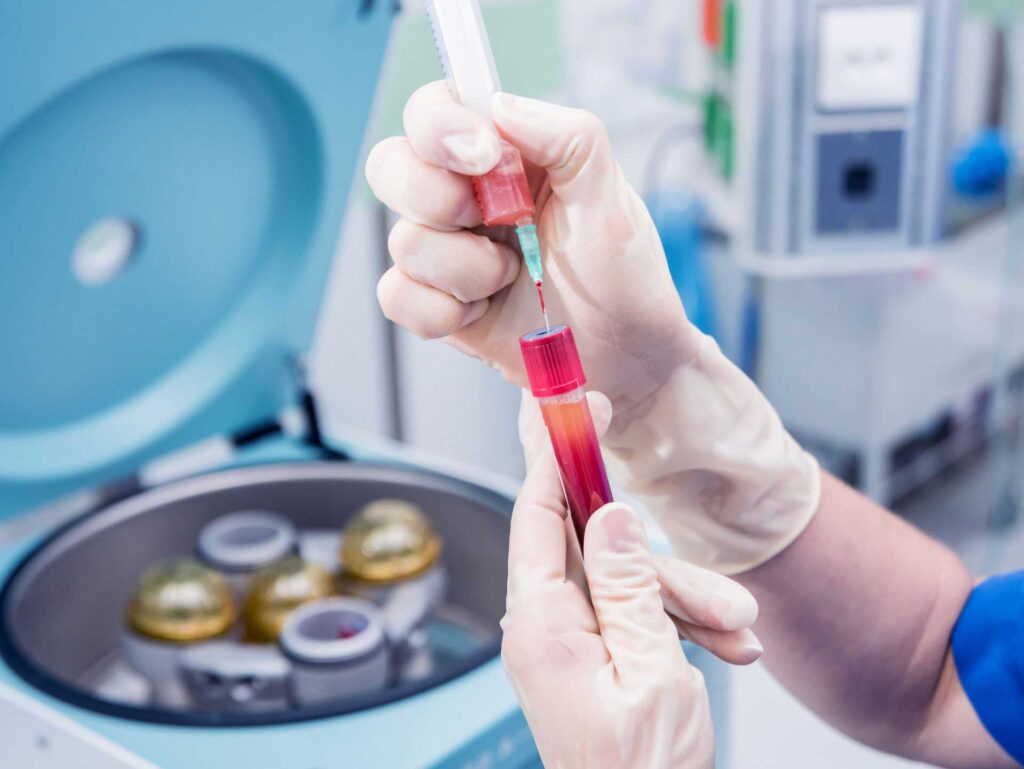PRP injections are primarily used to encourage the body to produce new, healthy cells and accelerate healing. PRP injections are frequently used in orthopedics to treat bone disorders and joint pain. When doing spinal fusion surgery, it is utilized to encourage bone development. It is also utilized in other medical specialties like dentistry and plastic surgery.
WHAT IS PLATELET-RICH PLASMA TREATMENT (PRP)?
Plasma called PRP (Platelet Rich Plasma) has a high concentration of platelets. Platelets from the patient’s own blood are used to create PRP.
The “tissue repair power” of platelets is promoted via PRP therapy, a medical procedure. In order to treat injuries or diseases that take a long time to heal, PRP therapy uses the patient’s own platelets to be collected and injected into the injured area of the body.
WHAT DO PLATELETS ACTUALLY DO?
The primary roles of platelets are to “solidify blood” and “produce growth factors that support tissue repair.”
As you may have observed, a cut that has been bleeding for some time will eventually cease bleeding and heal naturally. When a sprain happens, the injured area swells right away (internal bleeding), ultimately turns blue, and the swelling slowly goes down.
In these healing processes, platelets are crucial. Our body can sustain self-defense and mend itself thanks to the function of platelets.
The capacity to heal itself, however, is compromised when there is an imbalance between the capacity to repair tissue and the capacity to destroy tissue. By injecting PRP, which contains a significant amount of platelets, into the damaged region, PRP therapy is a treatment that can enhance the ability to repair the damage that one already possesses.

PRP TREATMENT PROCEDURE
1. Blood collection
In order to create PRP during PRP therapy, the patient’s blood must first be drawn using PRP tubes. Depending on the procedure, a different volume of blood is drawn.
2. Centrifugation
After that, a PRP centrifuge is used to extract PRP from the collected blood.
3. Injection
The afflicted area receives an injection of PRP. For example, 2cc of PRP is injected into the afflicted area when treating tendinitis. A 4cc dose of PRP is injected into the afflicted area to treat arthritis.
Due to the pouch-like architecture of arthritis joints, 4cc of PRP—double the standard dosage—is frequently utilized to prevent the PRP from spreading beyond the afflicted areas. In order to collect the PRP in the joint sac in the unaffected area, it is also advised that the patient rests for around 20 minutes during that time.
PRP can travel outside of the damaged area since the inside of the joint is pouch-shaped, thus 4 ml of PRP, which is twice as much, is utilized for arthritis. When you have arthritis, you should rest for about 20 minutes while applying pressure to the joint bag of the body part other than the affected place to cause PRP to build up there.
ARE THERE ANY NEGATIVE CONSEQUENCES TO PRP THERAPY?
Although PRP therapy has few adverse effects, you can experience some discomfort during and after the procedure because PRP is injected with a needle straight into tissues like muscles and tendons. In contrast, you are unlikely to feel pain if you receive PRP therapy on the inside of the joint.
You are receiving therapy with your own blood, thus the dangers are extremely low. Rarely are minor bruising, redness, and edema possible.

NUMBER OF PRP SESSIONS
The frequency of PRP therapy is not constrained in any way. To promote quick healing, orthopedic surgeons typically provide one or two treatments for muscle strains. There are individual variations in the outcome and number of treatments for sports injuries that are difficult to treat, such as tendonitis. However, the procedure is frequently done two to three times.
Additionally, PRP therapy for knee osteoarthritis and arthritis is typically administered twice or three times to reduce pain. PRP therapy can be repeated two to three times if the discomfort returns after around six months.
In reality, the usage of such PRPs for the treatment of arthritis is growing rapidly. Specialty Care Clinics ensure overall safety while performing the PRP treatment. Call us at (469) 545-9983 to book an appointment.
